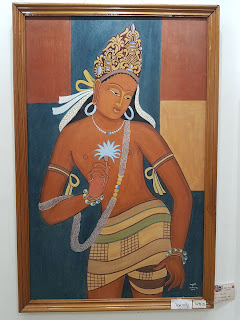Foe By J . M. Coetzee
In the character of Robinson Crusoe, whose counterpart in Coetzee's novel is only called 'Cruso', we find the most evident and startling alterations of all characters. From the positive hero and master of even the most desperate situations in life, the former protagonist of Defoe's novel has turned into an anti-hero in Foe.
The actions of the original Robinson Crusoe are probably well known, so the behaviour of Cruso in Foe will mostly be contrasted to them[10].
Especially in his mode of living, Cruso differs enormously from his literary predecessor.
Cruso does not save anything from the wreck except for a knife [F16]. Moreover, he says that there is no need for tools [F32], and the few tools he has made himself are a needle made of fishbone [F9f.], a wooden spade, a "sharp stone lashed to a stick" as mattock, and carved blocks of wood as bowls [all F15f.]. Those are only the most essential tools for survival, i.e. the tools to build a hut, sew clothes, and eat. Compared to the equipment of his 18th-century predecessor, Cruso's equipment is indeed relatively poor: Robinson Crusoe had gotten clothes, tools, and firearms from the wreck [RC39], also razors, scissors, knives, and forks [RC41ff.]. Later on, he manages to make baskets [RC80], earthenware [RC89], a mortar and pestle [RC90], candles [RC106], a canoe [RC100], a tobacco pipe [RC106], etc. While Robinson Crusoe puts a lot of effort into improving his equipment and is always eager to get new tools[11], Cruso is satisfied once he reaches the state when mere survival is guaranteed[12]. In a way, both Crusoe and Cruso represent different 'stages' of civilisation: whereas Crusoe is constantly progressing to reach the state of an early agricultural society, Cruso does not intend to 'develop' or even change his lifestyle[13] but stays 'hunter and collector'. He is in no way interested in progress, and he rationalises not making any candles in a rather philosophic way: "Which is easier: to learn to see in the dark, or to kill a whale and seeth it down for the sake of a candle?"[14]. His cryptic explanation is both a hint to human laziness and a critique of progress itself. Juxtaposed with the never-ending energy of the original Crusoe to better and enhance his daily life towards a state of higher civilisation, Coetzee's interpretation of the castaway's character doubts the ideal of man as master of all nature. Instead of being the innovative, self-made engineer like Crusoe, Cruso is very much indifferent to his environment, also to his fellow castaways[15]. He thus is the exact opposite of Robinson Crusoe as representative of humanism, who first saves Friday and then a Spanish prisoner of the 'savages' (later on also Friday's father, who is tied in a canoe) from being slaughtered [RC148;171] and frees the victims of a mutiny [RC187].
Summary of the 'Foe'
Part 1
Susan Barton, searching for her missing daughter in Brazil, is thrown up on the island after a shipboard mutiny, and gradually adjusts to the basic environment and company of long-term castaway Cruso and African slave. Friday. Rescued a year later and upon Cruso's death from fever, Captain Smith, their rescuer, predicts great interest in the story and encourages Susan to write or team up with a writer.
Part II
Marooned again in English society when the chosen writer, Daniel Foe, flees his debits and runs from the bailiffs, Susan struggles to survive with the newly freed Friday in tow, impoverished and in danger, searching for the writer who has taken on her project - and taken over her life.
Part III
Susan eventually finds Foe and queries the book's progress, disputing content, shape and emphasis and exploring their conflicting views and goals. Susan is a realist and seeker of truth and Foe represents the commercial class in the new capitalist system but he is also a philosopher. Together they speculate about story and truth and the act of writing. And what to do with Friday is a key concem.
Part IV
An unidentified, neutral voice traces the generalised beginning and end of the story-unhinged from the embodied search for verifiable fact. Is this the "true" perspective? In two versions, it comes upon the characters in the submerged wreck of the ship. lifeless, only Friday is still barely alive. The speaker's point of view then travels out into a dimension of experience and sensation beyond humans and island and sea, beyond both speech and writing. "But this is not a place of words. This is a place where bodies are their own signs. It is the home of Friday" (157)
Themes
The Power of Stories
The novel explores the power of stories. Coetzee's book is written in parallel to Robinson Crusoe (1719) and the narrative of Foe repurposes an existing story. The book then examines the difficulty of telling such a story Coetzee's reinterpretation of the story of Robinson Crusoe dwells on the potential power of the story whereas Daniel Defoe's original book does not. Foe switches the focus away from Robinson Crusoe and toward Friday Coetzee portrays the world through the eyes of Susan Barton and examines the way in which a secondary character in the original story can find a voice and thus become imbued with new power.





















